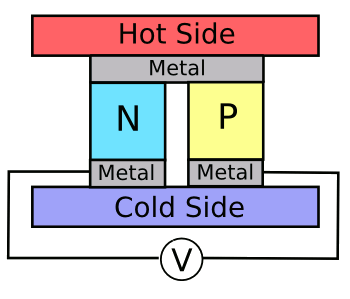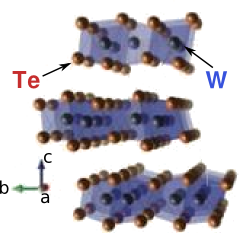
Tungsten Telluride
November 3, 2014 In antiquity, places were often named after a local characteristic or deity. The later case is called a theophorism, from the Greek word for god (Θεος, theos) and bearing (φορος, phoros). Sometimes the connection is not that apparent, as in the name for Woodbridge, a town in Suffolk, England. The name is a variant of its original name, Wodenbrycge (Woden's Bridge). Woden (a.k.a., Odin) is the Norse/Germanic/Anglo-Saxon mythology equivalent of Jupiter and Zeus. | Norse god, Odin, as depicted in an 1825-1827 sculpture by H. E. Freund (1786-1840). Odin, like Zeus, was the father of the gods and the ruler of the abode of the gods. For Odin, the abode of the gods was Asgard. For Zeus, it was Mount Olympus. (Via Wikimedia Commons.) |
• Tellurium is an important component of iron alloys, such as stainless steel, since it promotes machinability.Thermoelectric energy-harvesting is an important niche area for tellurium compounds, and it's enabled electrical power generation for many spacecraft. It's also used on planetary rovers, such as the Curiosity rover, the robotic science mission that's been on Mars since August 6, 2012. The Curiosity rover uses thermoelectrics to convert the heat of the radioactive decay of the plutonium isotope, plutonium-238, (238Pu) in plutonium dioxide. I wrote about this power source in a previous article (Curiosity Rover Power, November 5, 2012). The energy output of plutonium-238 by radioactive decay is 560 watts/kg, the half-life of plutonium-238 is 87.7 years, so the power source remains fairly active for many years. Conversion of the heat to electricity is through the Seebeck effect. Lead telluride is very effective as a Seebeck material, since it has a reasonably high electrical conductivity, but a low thermal conductivity. As we know from the second law of thermodynamics, we need a temperature differential to do useful work, so the low thermal conductivity is important. A basic thermoelectric cell, as shown in the figure, has junctions of n- and p-doped lead telluride, but the energy conversion efficiency is low. The initial power output of the Curiosity rover source was 2,000 watts, but this produced just a little more than a hundred watts of electrical power against the Mars ambient temperature.
• Cadmium telluride (CdTe) is a highly efficient photovoltaic material, so it's used in solar panels. Its chalcogenide sister, Selenium, is used in CIGS (Copper indium gallium selenide) solar cells.
• Mercury cadmium telluride is an important infrared detector at wavelengths as long as 12 μm. It's used as the enabling component in forward looking infrared (FLIR) imaging devices and sensors used in a variety of military and other applications. Lead telluride is used, also, in far-infrared photodetectors.
• In computer applications, tellurium is used in phase-change materials in rewritable optical discs, such as DVD-RW. It's also used as a phase-change memory material.
• Bismuth telluride (Bi2Te3) and lead telluride (PbTe) are Thermoelectric materials.
 | A thermoelectric cell. Bismuth and tellurium, common material components in such cells, are mildly toxic. (Image by the author, rendered using Inkscape.) |
 | Crystal structure of tungsten telluride (WTe2), a non-magnetic, layered, transition-metal dichalcogenide. (Image: Cava Laboratory/Princeton University, modified for clarity.) |
References:
- Mazhar N. Ali, Jun Xiong, Steven Flynn, Jing Tao, Quinn D. Gibson, Leslie M. Schoop, Tian Liang, Neel Haldolaarachchige, Max Hirschberger, N. P. Ong, and R. J. Cava, "Large, non-saturating magnetoresistance in WTe2," Nature, vol. 514, no. 7521 (October 9, 2014), pp. 205-208.
- Unstoppable magnetoresistance, Princeton University Press Release, October 9, 2014.
- Spaceballs (1987, Mel Brooks, Director) on the Internet Movie Database.